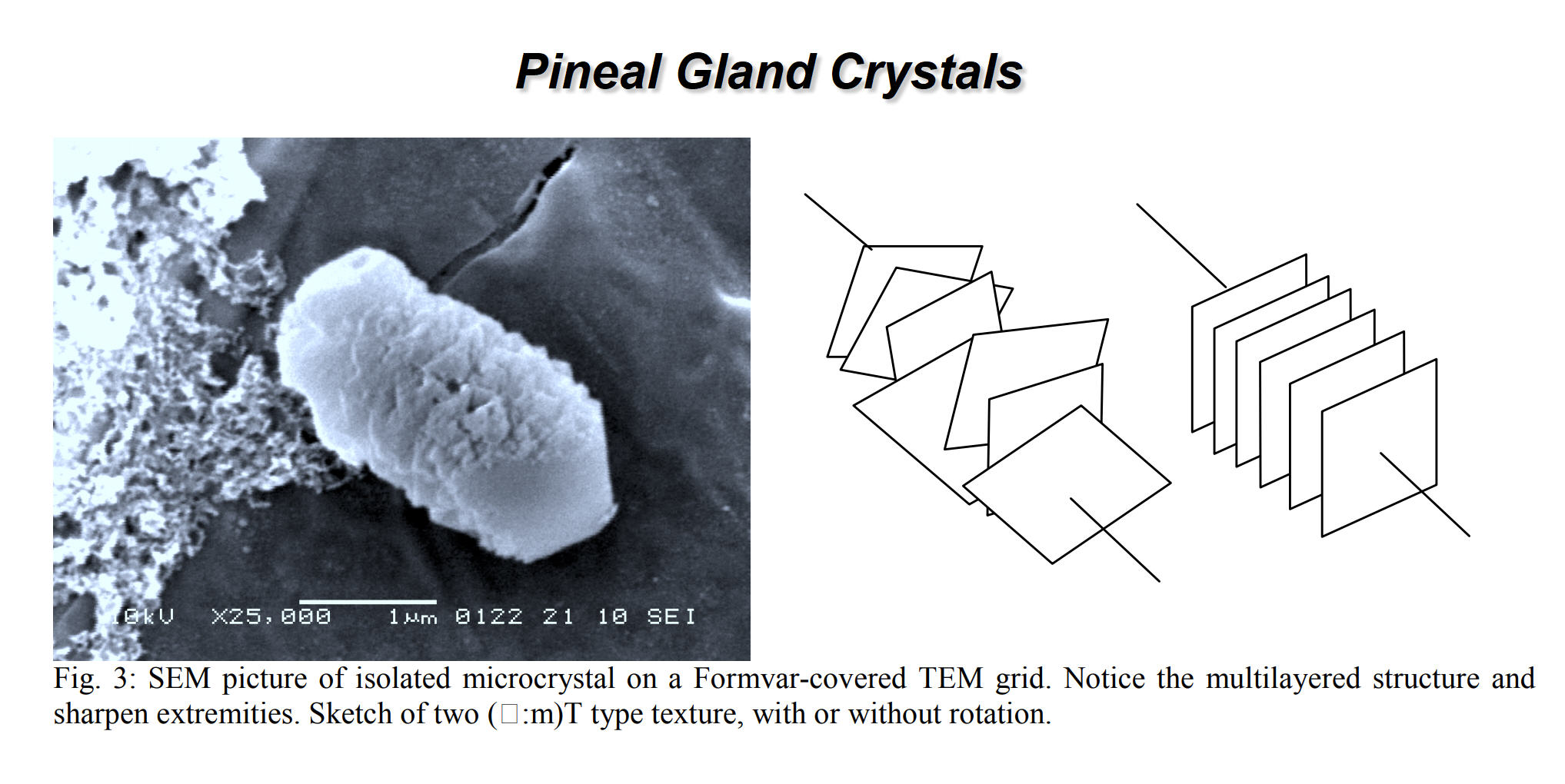The Body Contains Batteries and The Pineal Gland is a Radio Frequency-Electromagnetic Crystalline Receiver

This video describes the inner workings of the body as a battery, the vagus nerve and augmented by magnetic fields. This is why you need to be so attentive to your balance in diet, water, and vital minerals. As D Gary Young often said, death begins in the gut.
Neuromodulation of the Pineal Gland via Electrical Stimulation of Its Sympathetic Innervation Pathway
The pineal gland is an azygous, endocrine gland located in the midline of the brain. In humans, it is one solid structure situated deep within the brain between the habenular and posterior commissures, directly posterior to the third ventricle. In rodents, the gland is comprised of superficial, deep and stalk components. The superficial gland is found on the surface of the brain – anterior to the cerebellum and directly beneath the confluens sinuum. The pineal gland is comprised of a variety of cell types: pinealocytes, microglia, astrocytes, vascular and leptomeningeal cells, and endothelial cells.
Source: https://www.ncbi.nlm.nih.gov/pmc/articles/PMC7145358/
The pineal microcrystals appear as a stack of thin rhombohedrons with their flat faces normal to the long axis
of the crystal (Fig. 3). These complex structures can be classified using the texture point group nomenclature of Shubnikov et al. [12]. The texture may be noncentrosymmetric because of the structural organization of the sub-unit, even though the single crystals do have a center of symmetry. This symmetry breaking would allow both SHG and piezoelectricity.
Calcite in otoconia, microcrystals found in the inner-ear otolith, has been shown to exhibit piezoelectricity [13, 14]. These crystals have a structure similar to that of the pineal microcrystals.
By that very fact the piezoelectric property of the crystals would allow them to interact with the electrical component of electromagnetic fields. A simplified formula applied to those crystals (f = v/2d) lets us think that these crystals could be sensitive to RF-EMF in the range of 500MHz to 2.5GHz depending on there size. This range contains portable wireless frequencies, GSM (872-960MHz), DCS (1710-1875MHz), UMTS (1900-1920MHz, 2010-2025MHz), or BlueTooth (2400-2483,5MHz). Piezoelectric determination of minute grain requires developing new methods based on either MEMS Precision Instruments microtweezers or direct correlation between electro-optic and piezoelectric properties in crystal with optical microscopy.
Source: https://hal-ineris.archives-ouvertes.fr/ineris-00972373/document